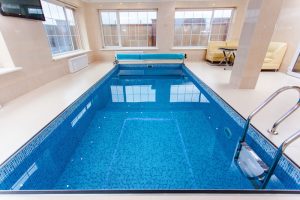What is ORP? What is the appropriate ORP for potable drinking water? Is ORP useful for our facility’s water quality measurements?
ORP is “Oxidation Reduction Potential”. Measured in millivolts, it indicates a substance’s potential to oxidize or reduce another substance. Many organizations use ORP testing to measure the disinfection potential of water. But the appropriateness of ORP can vary from facility to facility.
ORP is gaining popularity given that it can be an accurate measure of the ability to disinfect. Unlike simpler measures, it takes all of the variables into account due to their combined effect (source).
 Value of ORP Versus Simpler Measures
Value of ORP Versus Simpler Measures
While many individuals might consider water with high levels of free chlorine to be appropriate for disinfection, ORP considers more variables. For example:
- For example, water with satisfactory ORP could have low free chlorine if there is low combined chlorine (chloramines), low pH, no cyanuric acid, and low organic contaminants, resulting in satisfactory disinfection power.
- Conversely, ORP could be low despite high free chlorine if combined chlorine is high, cyanurate is present, pH is elevated, and contamination is high, meaning that the water has non-satisfactory disinfection power.
As background, consider that much of the historical study of ORP has focused on swimming and spa environments. Scientific and governmental references to ORP with regard to drinking water (potable water) are less common, and recent trends and marketing of “alkaline water” have actually serves as a counterpoint of the proper ORP for drinking water versus historically governmental views.
 ORP and Aquatic Water
ORP and Aquatic Water
As a starting point, consider ORP in the context of regard to aquatic health codes:
- The Centers for Disease Control and Prevention (CDC) defines ORP as follows: “Oxidation Reduction Potential (ORP) means a measure of the tendency for a solution to either gain or lose electrons; higher (more positive) oxidation reduction potential indicates a more oxidative solution.” (2018 Model Aquatic Health Code)
- Speaking more practically, the Australian government states “Oxidation-reduction potential (ORP) is the potential of a disinfectant to inactivate micro-organisms in a swimming pool or spa pool. It is a direct measure of disinfection power.” (Source)
In the CDC’s 2018 “Model Aquatic Health Code,” the following ORP parameters are defined:
4.7.3.3.4.6.2 – Minimum ORP Reading: The minimum ORP reading shall be no less than 600 mV measured directly after [one to 5 feet (30.5 cm to 1.5 m)] the ozone side-stream remixes into the full flow of the RECIRCULATION SYSTEM.
4.7.3.4.3.2 – Maximum ORP Reading: The maximum ORP reading shall be no greater than 900 mV.
If the ORP reading for the ozone system drops below 600 mV (regardless of the cause) a visual alarm or other indication shall be initiated that will alert staff on-site or remotely.
ORP and Drinking Water
When considering ORP and drinking water, viewpoints are less consistent.
Several websites state that the proper ORP level of drinking water is 650 mV, but do not cite specific sources. In fact, in the World Health Organization (WHO) “Guidelines for Drinking-water Quality”
The WHO states, “Oxidation-reduction potential (ORP, or redox potential) measurement can also be used in the operational monitoring of disinfection efficacy. It is possible to define a minimum level of ORP necessary to ensure effective disinfection. This value has to be determined on a case-by-case basis; universal values cannot be recommended. Further research and evaluation of ORP as an operational monitoring technique are highly desirable.”
However, the Australian government does state in a fact sheet that “Drinking water is adequately disinfected at an ORP of 650 mV.” They go on to state, “In swimming pools, an ORP of 700 to 720 mV allows for both a quick disinfection and for breakpoint chlorination (destruction of chloramines) where conditions permit.” (Source)
That said, the “alkaline water” movement has made claims that a negative ORP has health benefits, and suggests that a suitable ORP would have a negative value of at least -50 mV, and often even more negative. However, the Mayo Clinic states that “For most people, plain water is better” as “there’s little credible evidence to support such claims.” (Source)
Regardless of the validity of the argument in favor of alkaline water, it overlooks what has been the historical purpose of monitoring ORP: disinfection of water from harmful organisms.
ORP and Its Suitability for Facilities
For facility and building managers, the question is whether ORP is a useful measure. The effectiveness of ORP in measuring water disinfection in practical environments depends greatly on the type of system.
- ORP is more useful in a recirculating water environment such as a pool or hot water loop because the water tends to be consistent in its chemical make-up.
- ORP is less useful in situations where water passes through without recirculation – such as a cold water line. This is because the input water tends to continually vary over time, making the ORP calibration and measurement less reliable.
Conclusion
ORP is a useful tool, but it is not a measure that should be used blindly without expert engineering evaluation of your entire water system. Contact Legionella Control Systems for assistance in determining whether ORP can be helpful in your situation. Take advantage of our free water testing for basic water characteristics including ORP.
Do you have questions about Legionella? We can help you with your Legionella risk assessment, Legionella testing, Legionella remediation, and everything else you need to control Legionella. Contact a Legionella Control Systems expert now.











